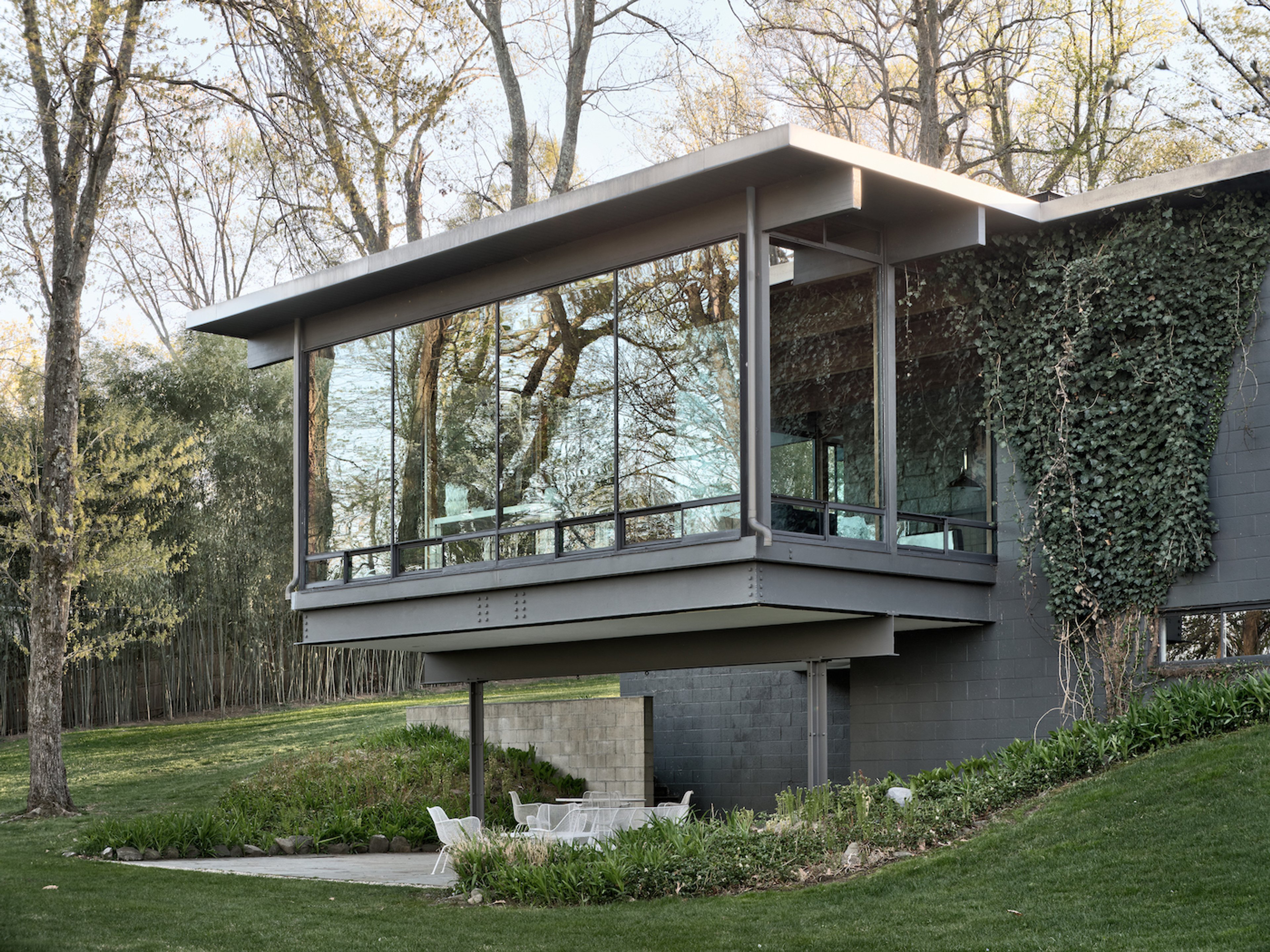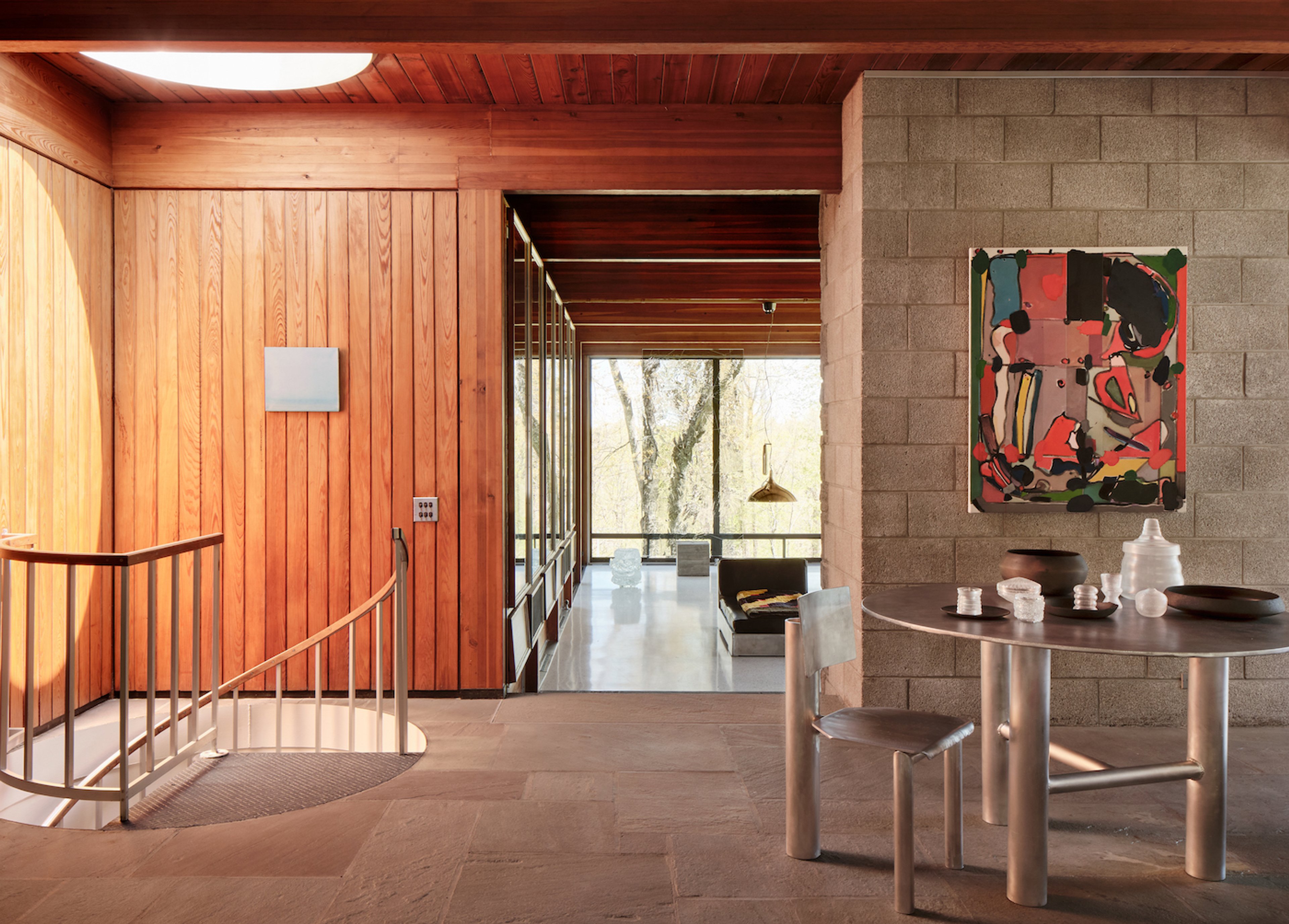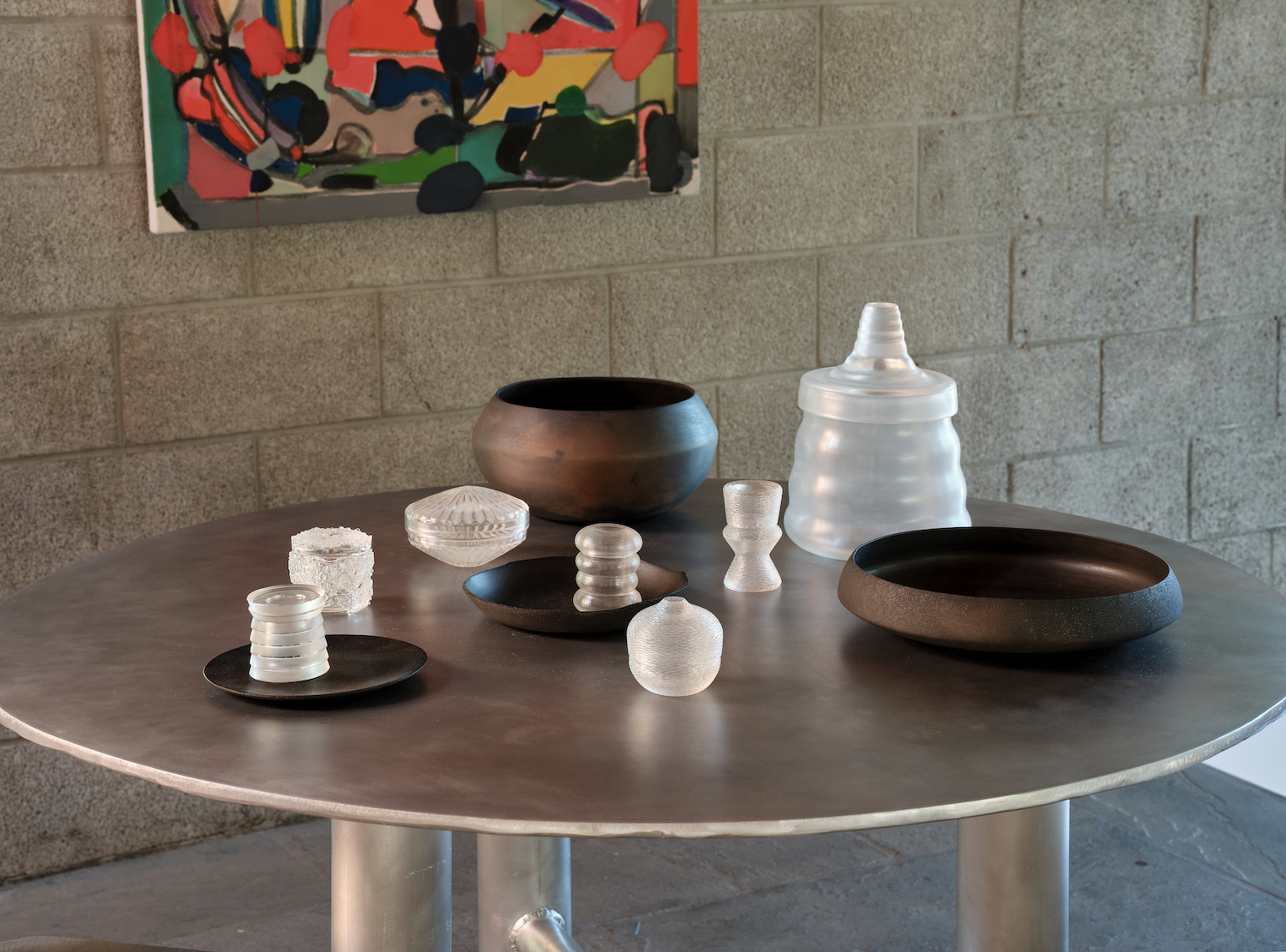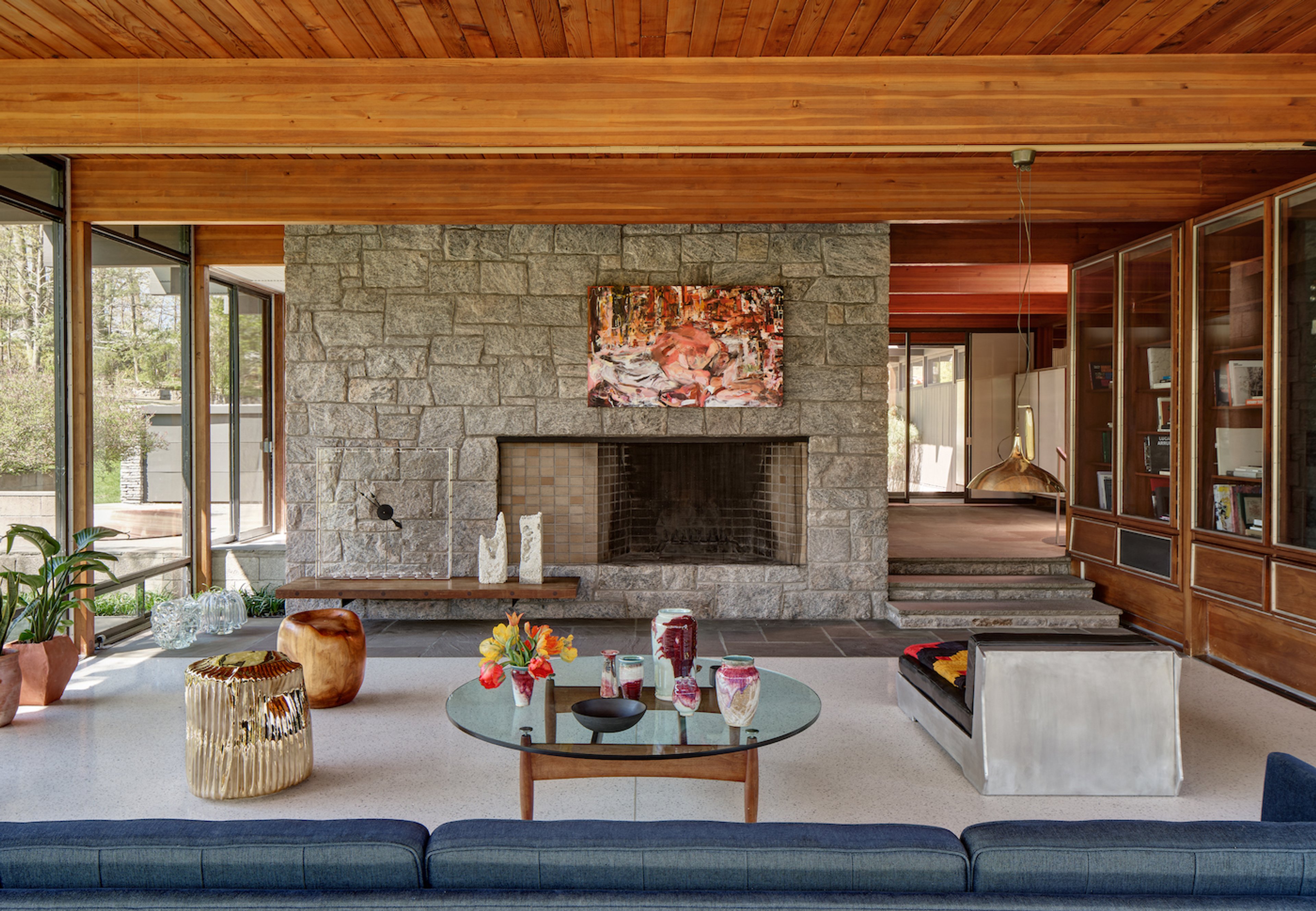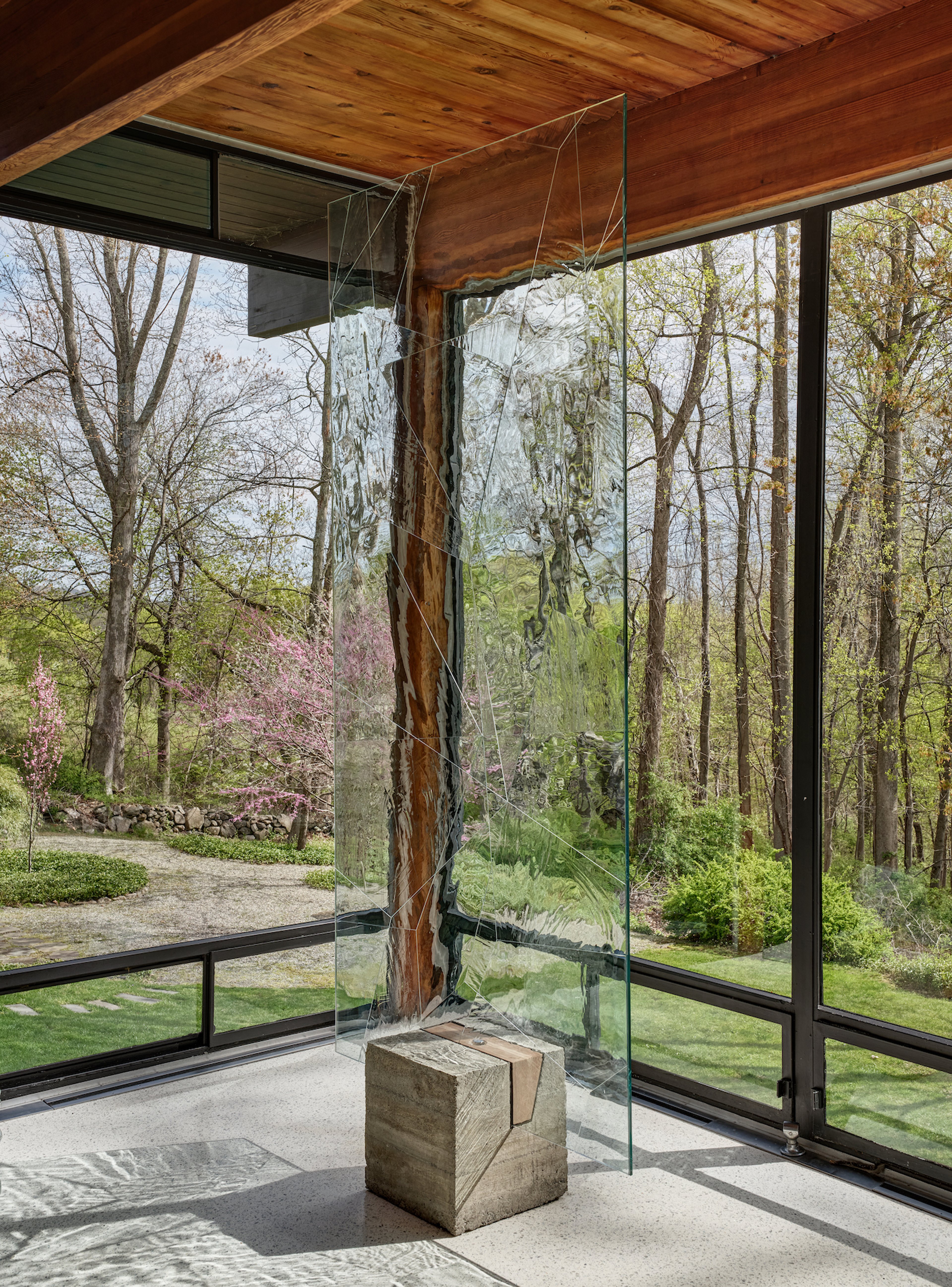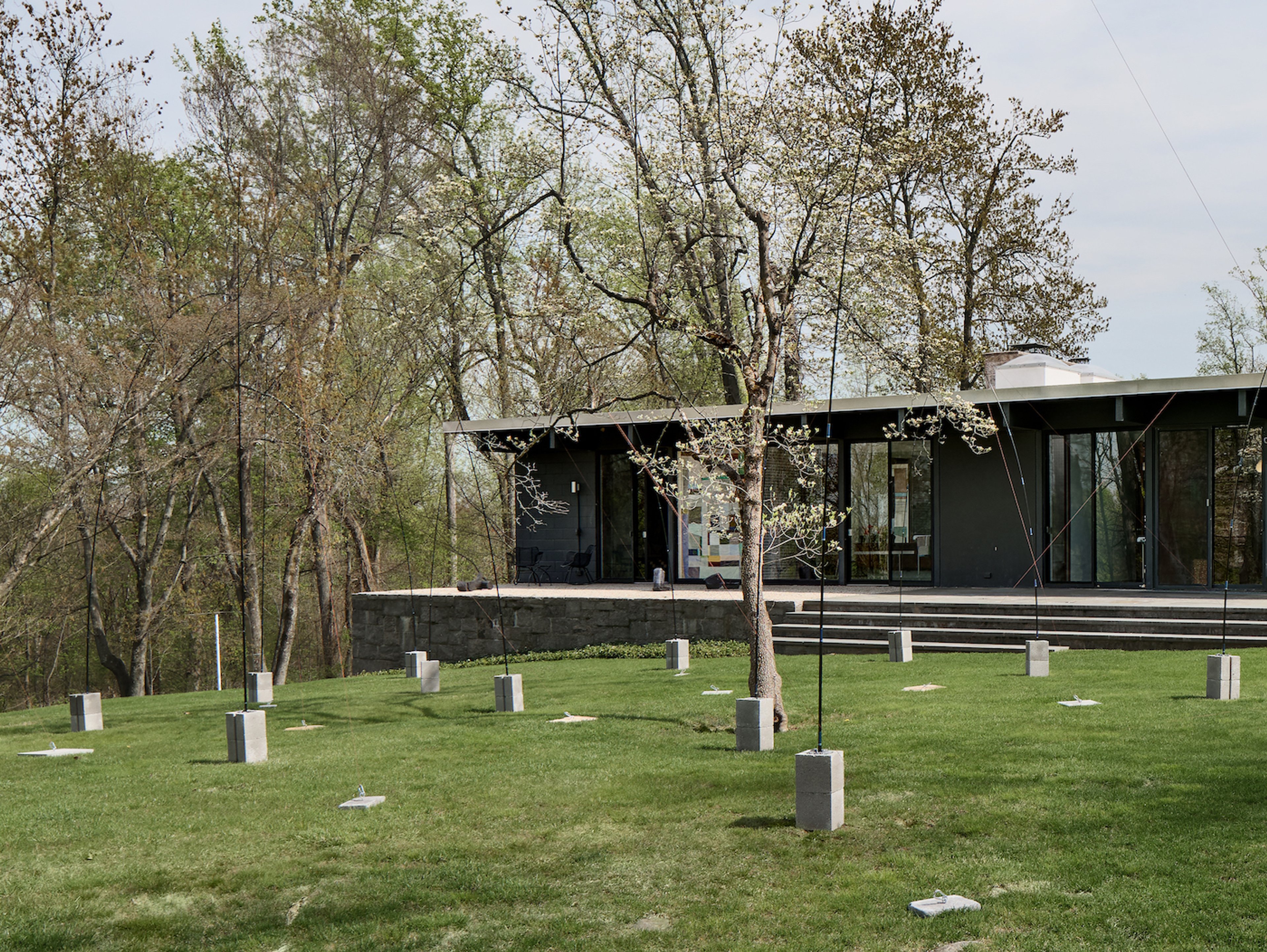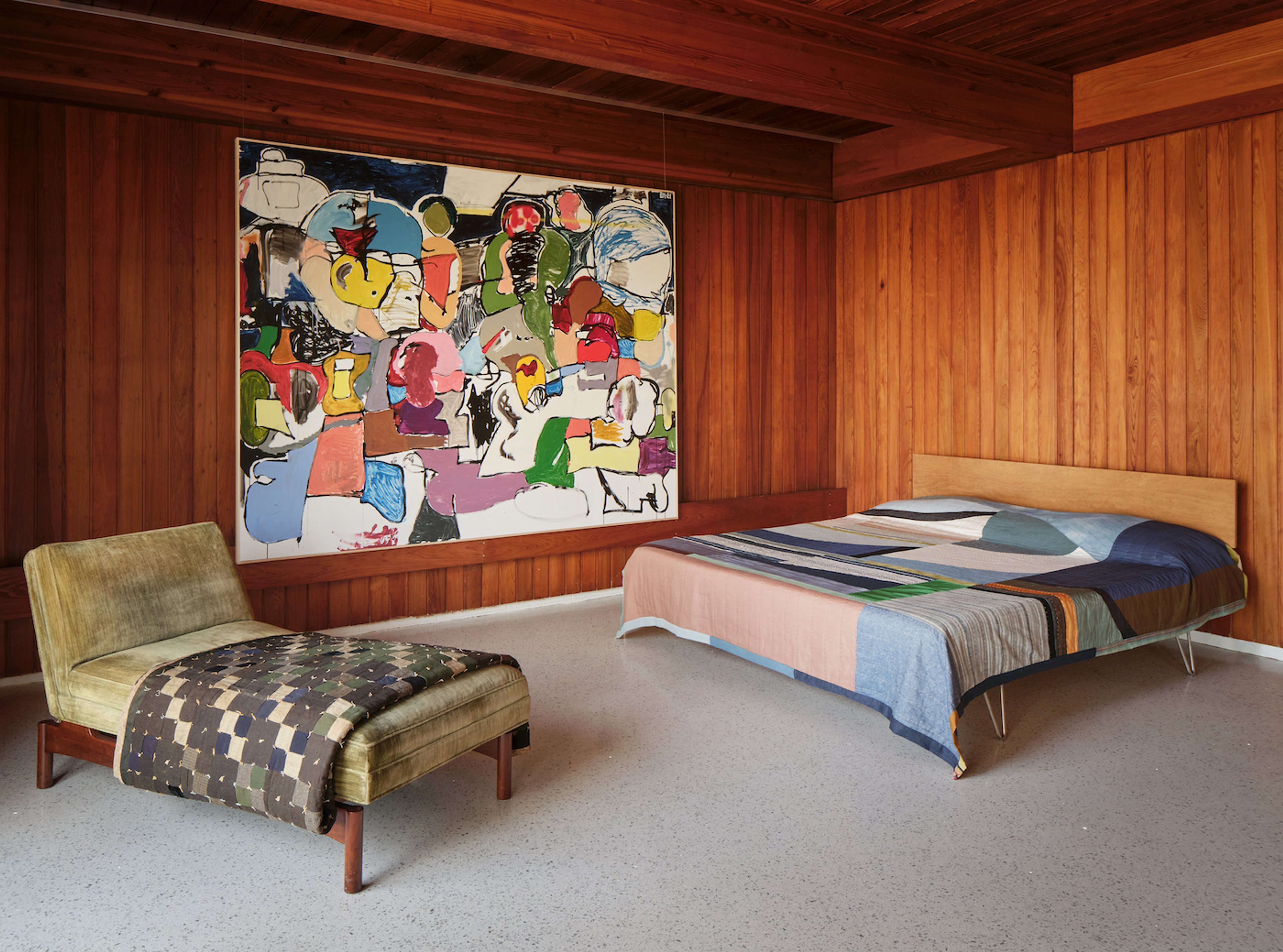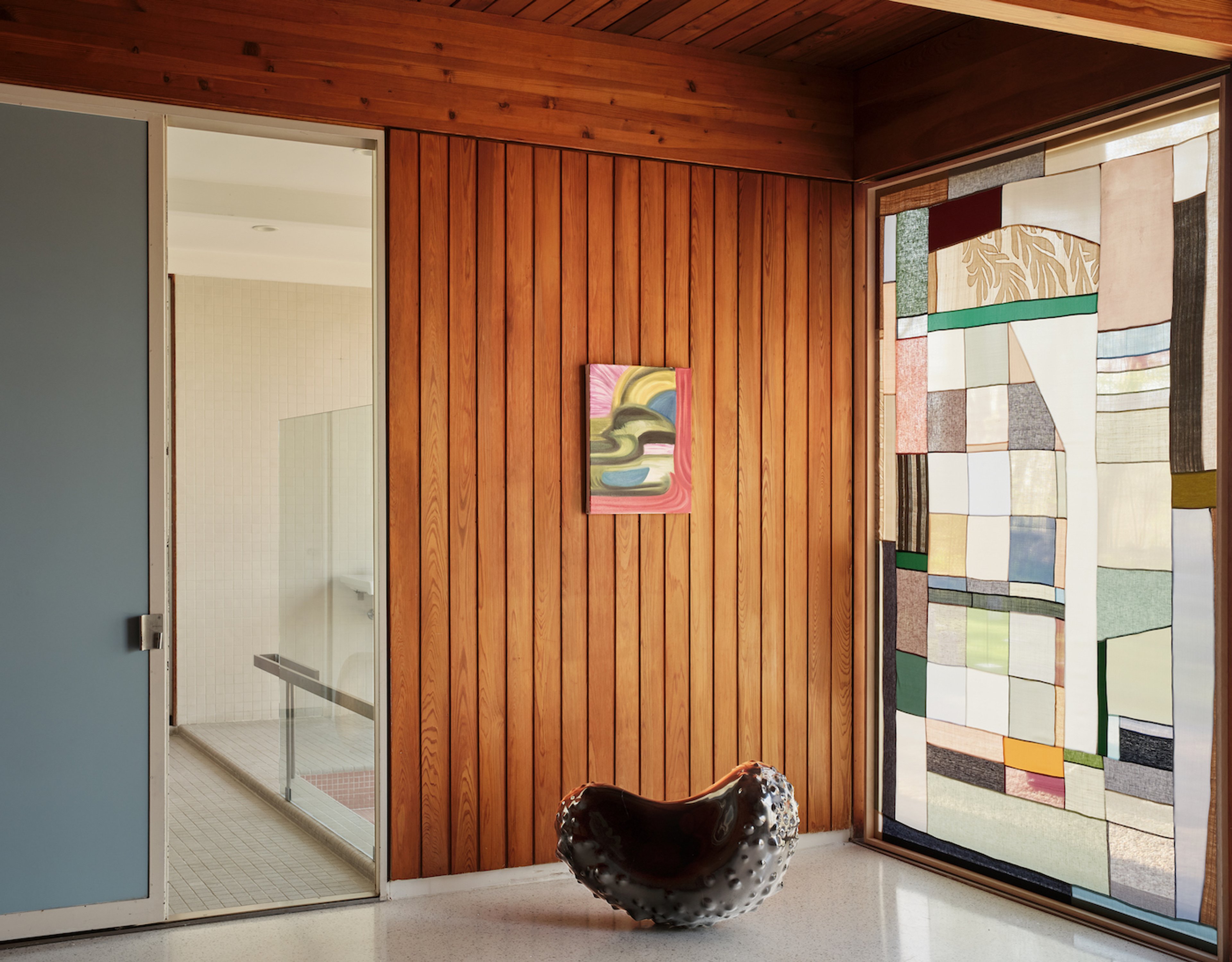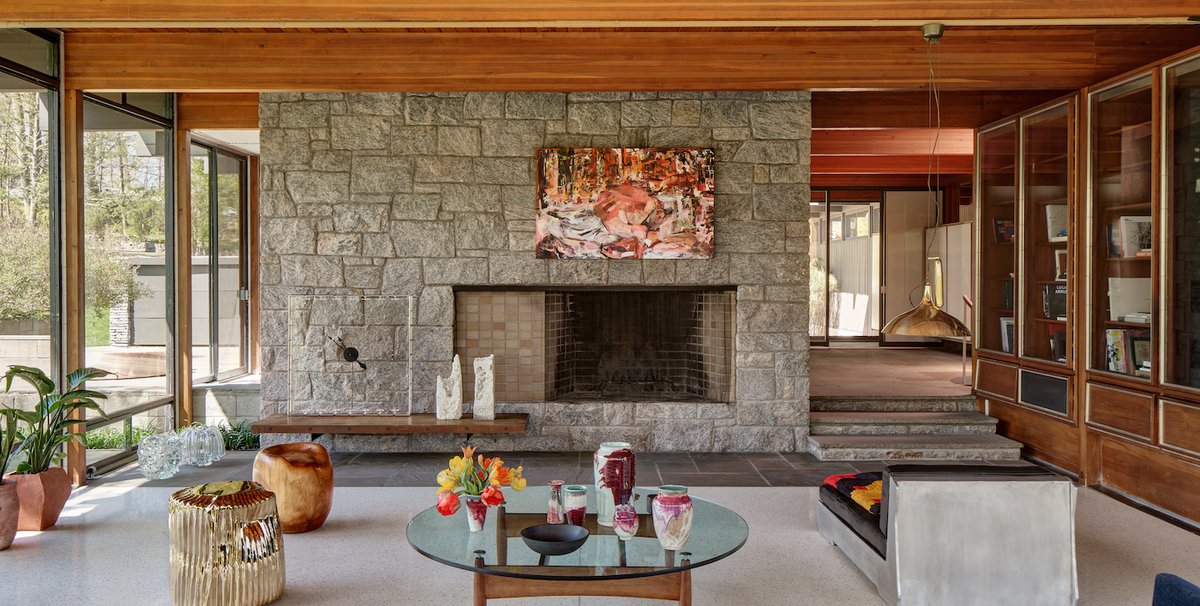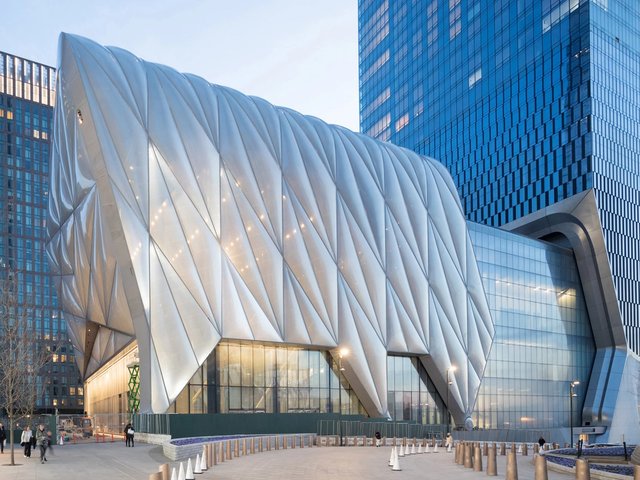The hybrid fair Object & Thing—an enterprise of the former Frieze artistic director Abby Bangser—aims to transcend the typical demarcations between art, design and architecture. This spring marks their second collaboration with Blum and Poe and Mendes Wood DM, this time in a Modernist home designed by the American architect Gerald Luss in Ossining—around an hour from Manhattan—that previously served as his family home in the 1950s. The cantilevered house has been emptied of the current owner’s belongings and flooded with meticulously curated works primarily offered by the galleries and artists selected by Bangser. The pieces aim to be in “dialogue with the house, and with one another”, she says.
The fair was launched in 2019 in Brooklyn with the aim of disrupting the traditional fair model by offering exhibitors a fee on sales rather than stands. The inaugural edition featured more than 30 galleries, but subsequent editions were scaled down both to adjust to social distancing requirements and to offer visitors a more unique fair-going experience. Last year's edition had around 10 galleries on the roster and was similarly held in a Modernist home in New Canaan, Connecticut, designed by Eliot Noyes. It was perhaps one of the only art fairs to take place in the US during the pandemic, drawing around 10,000 visitors. “We were able to—and are able to—provide a safe viewing experience, which is a major advantage,” Bangser says.
The Luss House, which is made from wood and glass and amplified by the woodlands around it, itself is a gem that provides “some different ways of looking at contemporary art and design in dialogue with architecture”, Bangser says. The result is something that feels radically alive and fresh in comparison to the warehouses and convention centres that typically house art fairs.
Bangser also hopes the experience will inspire visitors to learn more about Luss and his epic contributions to design and architecture. “His legacy hasn’t been preserved like it should because he was mostly designing corporate interiors that often change quickly, unlike private residences,” she says. “But he’s made so many wonderful contributions and deserves his due.”
The fair will be on view until 24 July and appointments must be made in advance. Here are just some of the highlights:


